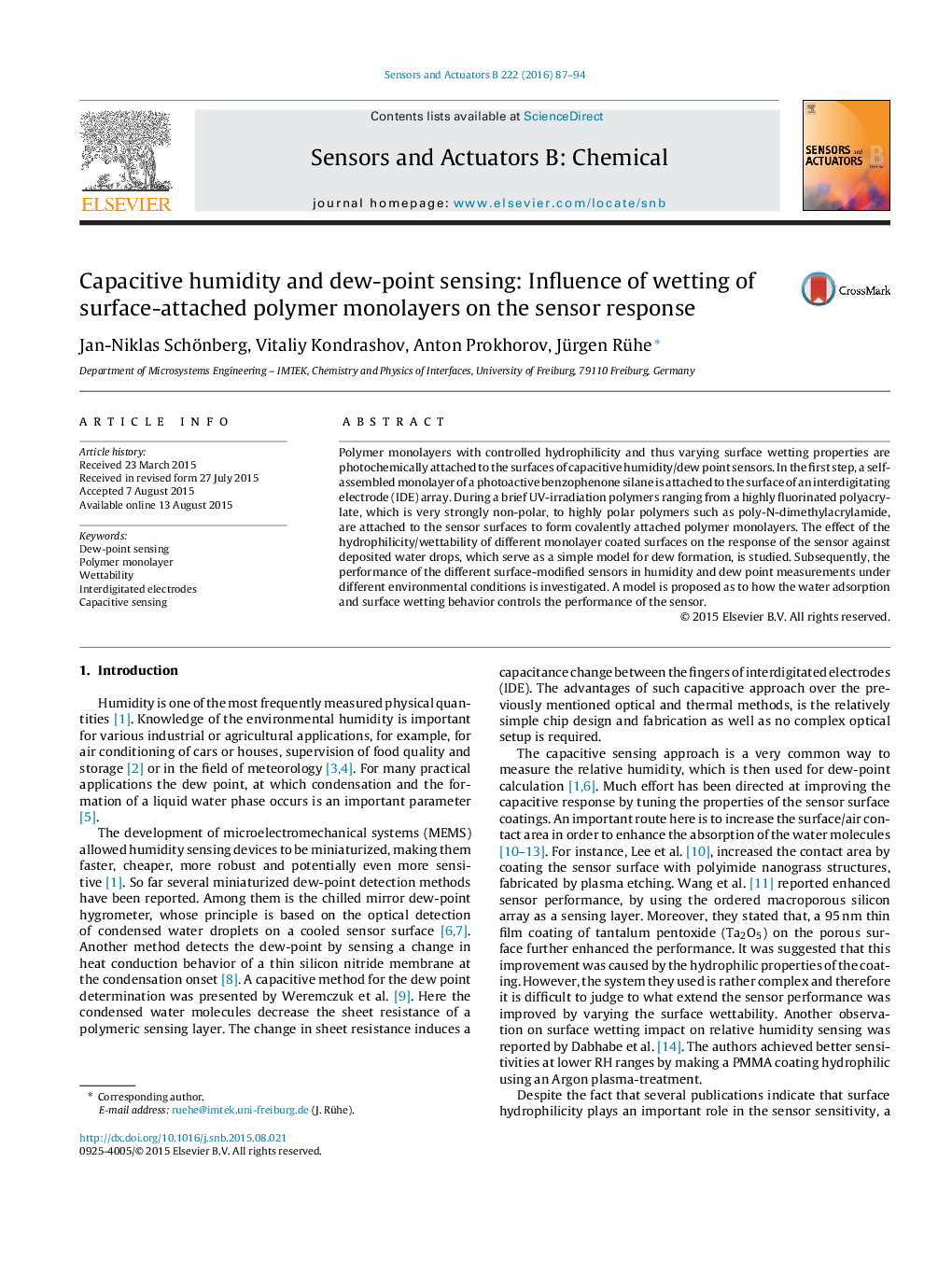| Article ID | Journal | Published Year | Pages | File Type |
|---|---|---|---|---|
| 7144958 | Sensors and Actuators B: Chemical | 2016 | 8 Pages |
Abstract
Polymer monolayers with controlled hydrophilicity and thus varying surface wetting properties are photochemically attached to the surfaces of capacitive humidity/dew point sensors. In the first step, a self-assembled monolayer of a photoactive benzophenone silane is attached to the surface of an interdigitating electrode (IDE) array. During a brief UV-irradiation polymers ranging from a highly fluorinated polyacrylate, which is very strongly non-polar, to highly polar polymers such as poly-N-dimethylacrylamide, are attached to the sensor surfaces to form covalently attached polymer monolayers. The effect of the hydrophilicity/wettability of different monolayer coated surfaces on the response of the sensor against deposited water drops, which serve as a simple model for dew formation, is studied. Subsequently, the performance of the different surface-modified sensors in humidity and dew point measurements under different environmental conditions is investigated. A model is proposed as to how the water adsorption and surface wetting behavior controls the performance of the sensor.
Related Topics
Physical Sciences and Engineering
Chemistry
Analytical Chemistry
Authors
Jan-Niklas Schönberg, Vitaliy Kondrashov, Anton Prokhorov, Jürgen Rühe,
